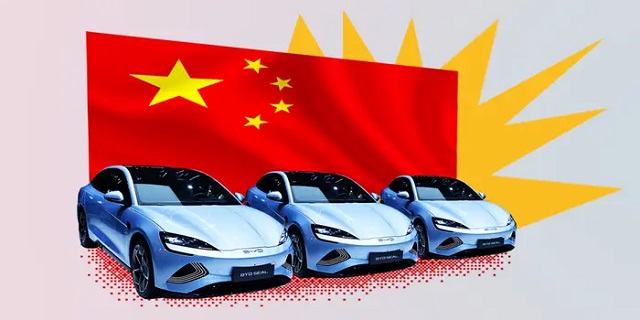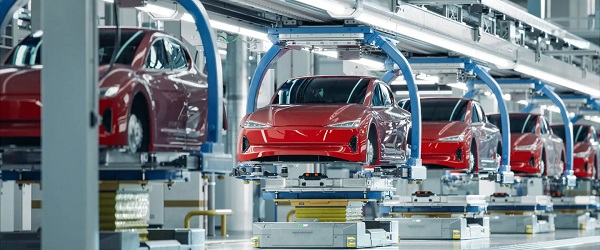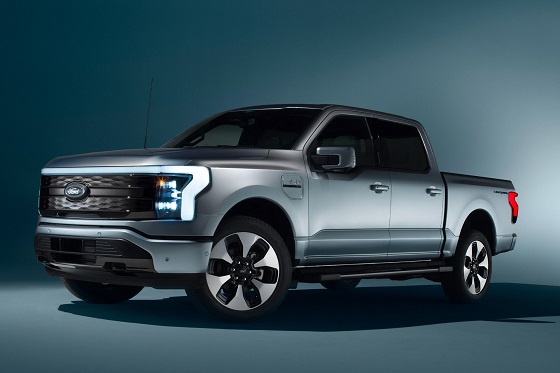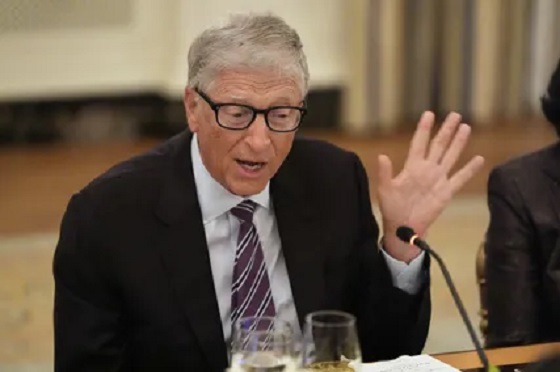Automotive
Europe’s EV Market Collapse Provides A Lesson For UAW Leadership

 From the Daily Caller News Foundation
From the Daily Caller News Foundation
It is an ill-kept secret of American politics that most of the big labor unions in the country have long been client organizations of the Democratic Party. In presidential election years, endorsements from these unions for the party’s nominee have generally been foregone conclusions regardless of voting attitudes of rank-and-file union members.
Some are quicker to endorse than others. Vice President Kamala Harris barely had time to buy campaign letterhead before the United Auto Workers (UAW) weighed in on July 31 with its endorsement. The union’s bosses made the move despite the reality of the Biden-Harris electric vehicle mandates placing many of that union’s jobs at risk as the companies they work for lose billions each year on quixotic efforts to force the public to enjoy paying premiums for cars they cannot rely upon when the going gets tough.
Even with that early move, the UAW fell 9 days behind the AFL-CIO, which jumped on the Harris bandwagon so quickly it probably made union members’ heads spin. Hey, speed matters when your business model relies on constantly asking for favors and protections from the federal government, for which the Democratic Party has traditionally been the most fertile ground to plow.
Given that reality, the Teamsters Union made big news this week by endorsing — well, no one — despite overwhelming support among the rank-and-file for the Republican candidate, former President Donald Trump. It was the first time the Teamsters had failed to endorse the Democrat in a race since 1996, and only the second time in the union’s existence. Teamsters General President Sean O’Brien spoke at the Republican convention in July — and was snubbed by the Democrats at their convention in return. So, the refusal to endorse Harris was not a huge surprise. But O’Brien, fully aware of the vindictive nature of the Democrats towards their political enemies, apparently decided it would not be politically prudent to give a full-throated endorsement to the candidate his members so obviously prefer.
With the race shaping up to be another nail-biter, it remains to be seen whether any of these major unions’ decisions will prove to be wise. But for the UAW, the move to endorse Harris comes with increasing risk amid a softening market for the EVs being forced on U.S. consumers and the rising challenge by Chinese EV makers to the hegemony of domestic car companies in the U.S. market.
With legacy automakers like Ford and General Motors already bleeding billions of dollars in losses in their EV divisions despite heavy government subsidies in place, they can ill-afford an incursion into the U.S. market from Chinese carmakers who are able to make and sell quality EVs for far less than American car companies can. Right now, Europe is providing an object lesson about what happens in the EV space when governments allow that to happen.
EU countries were slow to move to protect their domestic car manufacturers when Chinese companies like BYD began to flood the European market with EVs. EV buyers in countries like Germany and France eagerly bought up the Chinese cars, saving thousands of Euros per unit in the process. When the EU belatedly moved to impose import tariffs on Chinese cars, the domestic car companies responded by raising prices for their own EVs in an effort to recover losses.
The result has been entirely predictable: EV sales in Germany collapsed by nearly 70% during the month of August. In France, they plunged by 33%. Clearly the appetite among EU car buyers for EVs is extremely price sensitive (no one could have possibly seen that coming), and consumers are more than happy to go back to buying gas-powered cars as cheaper alternatives.
Now, the climate alarmist central planners at the EU are proposing to respond to those uncooperative buyers by imposing massive fines on car makers for continuing to sell them the gas-powered cars they actually want to buy. Because, of course, that would be the response from power-mad apparatchiks.
Given that the Biden-Harris regime has basically followed the EU’s model on EV regulation, the EU’s struggles provide a preview of coming attractions for the U.S. auto market under a Harris presidency. It is hard to believe this is the future the UAW leadership really desires for its members.
David Blackmon is an energy writer and consultant based in Texas. He spent 40 years in the oil and gas business, where he specialized in public policy and communications.
Automotive
Politicians should be honest about environmental pros and cons of electric vehicles

From the Fraser Institute
By Annika Segelhorst and Elmira Aliakbari
According to Steven Guilbeault, former environment minister under Justin Trudeau and former member of Prime Minister Carney’s cabinet, “Switching to an electric vehicle is one of the most impactful things Canadians can do to help fight climate change.”
And the Carney government has only paused Trudeau’s electric vehicle (EV) sales mandate to conduct a “review” of the policy, despite industry pressure to scrap the policy altogether.
So clearly, according to policymakers in Ottawa, EVs are essentially “zero emission” and thus good for environment.
But is that true?
Clearly, EVs have some environmental advantages over traditional gasoline-powered vehicles. Unlike cars with engines that directly burn fossil fuels, EVs do not produce tailpipe emissions of pollutants such as nitrogen dioxide and carbon monoxide, and do not release greenhouse gases (GHGs) such as carbon dioxide. These benefits are real. But when you consider the entire lifecycle of an EV, the picture becomes much more complicated.
Unlike traditional gasoline-powered vehicles, battery-powered EVs and plug-in hybrids generate most of their GHG emissions before the vehicles roll off the assembly line. Compared with conventional gas-powered cars, EVs typically require more fossil fuel energy to manufacture, largely because to produce EVs batteries, producers require a variety of mined materials including cobalt, graphite, lithium, manganese and nickel, which all take lots of energy to extract and process. Once these raw materials are mined, processed and transported across often vast distances to manufacturing sites, they must be assembled into battery packs. Consequently, the manufacturing process of an EV—from the initial mining of materials to final assembly—produces twice the quantity of GHGs (on average) as the manufacturing process for a comparable gas-powered car.
Once an EV is on the road, its carbon footprint depends on how the electricity used to charge its battery is generated. According to a report from the Canada Energy Regulator (the federal agency responsible for overseeing oil, gas and electric utilities), in British Columbia, Manitoba, Quebec and Ontario, electricity is largely produced from low- or even zero-carbon sources such as hydro, so EVs in these provinces have a low level of “indirect” emissions.
However, in other provinces—particularly Alberta, Saskatchewan and Nova Scotia—electricity generation is more heavily reliant on fossil fuels such as coal and natural gas, so EVs produce much higher indirect emissions. And according to research from the University of Toronto, in coal-dependent U.S. states such as West Virginia, an EV can emit about 6 per cent more GHG emissions over its entire lifetime—from initial mining, manufacturing and charging to eventual disposal—than a gas-powered vehicle of the same size. This means that in regions with especially coal-dependent energy grids, EVs could impose more climate costs than benefits. Put simply, for an EV to help meaningfully reduce emissions while on the road, its electricity must come from low-carbon electricity sources—something that does not happen in certain areas of Canada and the United States.
Finally, even after an EV is off the road, it continues to produce emissions, mainly because of the battery. EV batteries contain components that are energy-intensive to extract but also notoriously challenging to recycle. While EV battery recycling technologies are still emerging, approximately 5 per cent of lithium-ion batteries, which are commonly used in EVs, are actually recycled worldwide. This means that most new EVs feature batteries with no recycled components—further weakening the environmental benefit of EVs.
So what’s the final analysis? The technology continues to evolve and therefore the calculations will continue to change. But right now, while electric vehicles clearly help reduce tailpipe emissions, they’re not necessarily “zero emission” vehicles. And after you consider the full lifecycle—manufacturing, charging, scrapping—a more accurate picture of their environmental impact comes into view.
Automotive
Ford’s EV Fiasco Fallout Hits Hard


From the Daily Caller News Foundation
I’ve written frequently here in recent years about the financial fiasco that has hit Ford Motor Company and other big U.S. carmakers who made the fateful decision to go in whole hog in 2021 to feed at the federal subsidy trough wrought on the U.S. economy by the Joe Biden autopen presidency. It was crony capitalism writ large, federal rent seeking on the grandest scale in U.S. history, and only now are the chickens coming home to roost.
Ford announced on Monday that it will be forced to take $19.5 billion in special charges as its management team embarks on a corporate reorganization in a desperate attempt to unwind the financial carnage caused by its failed strategies and investments in the electric vehicles space since 2022.
Cancelled is the Ford F-150 Lightning, the full-size electric pickup that few could afford and fewer wanted to buy, along with planned introductions of a second pricey pickup and fully electric vans and commercial vehicles. Ford will apparently keep making its costly Mustang Mach-E EV while adjusting the car’s features and price to try to make it more competitive. There will be a shift to making more hybrid models and introducing new lines of cheaper EVs and what the company calls “extended range electric vehicles,” or EREVs, which attach a gas-fueled generator to recharge the EV batteries while the car is being driven.
Dear Readers:
As a nonprofit, we are dependent on the generosity of our readers.
Please consider making a small donation of any amount here.
Thank you!
“The $50k, $60k, $70k EVs just weren’t selling; We’re following customers to where the market is,” Farley said. “We’re going to build up our whole lineup of hybrids. It’s gonna be better for the company’s profitability, shareholders and a lot of new American jobs. These really expensive $70k electric trucks, as much as I love the product, they didn’t make sense. But an EREV that goes 700 miles on a tank of gas, for 90% of the time is all-electric, that EREV is a better solution for a Lightning than the current all-electric Lightning.”
It all makes sense to Mr. Farley, but one wonders how much longer the company’s investors will tolerate his presence atop the corporate management pyramid if the company’s financial fortunes don’t turn around fast.
To Ford’s and Farley’s credit, the company has, unlike some of its competitors (GM, for example), been quite transparent in publicly revealing the massive losses it has accumulated in its EV projects since 2022. The company has reported its EV enterprise as a separate business unit called Model-E on its financial filings, enabling everyone to witness its somewhat amazing escalating EV-related losses since 2022:
• 2022 – Net loss of $2.2 billion
• 2023 – Net loss of $4.7 billion
• 2024 – Net loss of $5.1 billion
Add in the company’s $3.6 billion in losses recorded across the first three quarters of 2025, and you arrive at a total of $15.6 billion net losses on EV-related projects and processes in less than four calendar years. Add to that the financial carnage detailed in Monday’s announcement and the damage from the company’s financial electric boogaloo escalates to well above $30 billion with Q4 2025’s damage still to be added to the total.
Ford and Farley have benefited from the fact that the company’s lineup of gas-and-diesel powered cars have remained strongly profitable, resulting in overall corporate profits each year despite the huge EV-related losses. It is also fair to point out that all car companies were under heavy pressure from the Biden government to either produce battery electric vehicles or be penalized by onerous federal regulations.
Now, with the Trump administration rescinding Biden’s harsh mandates and canceling the absurdly unattainable fleet mileage requirements, Ford and other companies will be free to make cars Americans actually want to buy. Better late than never, as they say, but the financial fallout from it all is likely just beginning to be made public.
- David Blackmon is an energy writer and consultant based in Texas. He spent 40 years in the oil and gas business, where he specialized in public policy and communications.
-

 Community2 days ago
Community2 days agoCharitable giving on the decline in Canada
-

 Alberta22 hours ago
Alberta22 hours agoAlberta’s huge oil sands reserves dwarf U.S. shale
-

 Alberta1 day ago
Alberta1 day agoCanada’s New Green Deal
-

 Energy18 hours ago
Energy18 hours agoCanada’s sudden rediscovery of energy ambition has been greeted with a familiar charge: hypocrisy
-

 armed forces1 day ago
armed forces1 day agoOttawa’s Newly Released Defence Plan Crosses a Dangerous Line
-

 Business1 day ago
Business1 day agoCOP30 finally admits what resource workers already knew: prosperity and lower emissions must go hand in hand
-

 Energy2 days ago
Energy2 days agoEnergy security matters more than political rhetoric
-

 Indigenous23 hours ago
Indigenous23 hours agoResidential school burials controversy continues to fuel wave of church arsons, new data suggests







